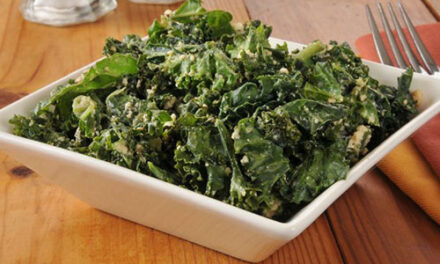Glutathione (GSH) is a powerful tripeptide antioxidant1,2 composed of the amino acids cysteine, glutamic acid, and glycine, and is primarily synthesized in the liver.3,4 This tripeptide is involved in the synthesis and repair of DNA and protein, as well as the synthesis of prostaglandins. It is also involved in the transport of amino acids, the metabolism of toxins and carcinogens, the function of the immune system, the prevention of oxidative cell damage, and the activation of enzymes activation.5,6,7 Many oxidative stressors can deplete GSH, including ultraviolet and other radiation, viral infections, environmental toxins, household chemicals, heavy metals, surgery, inflammation, burns, septic shock, and dietary deficiencies of GSH precursors and enzyme cofactors.8
Glutathione absorption
As a dietary supplement, glutathione has had a rocky beginning due to perceived bioavailability problems. The reason for this is that, in the 1990s, some researchers pointed out that despite being present in fruits, vegetables, and meats, the levels of glutathione in the body do not seem to correlate to dietary intake; this suggested that oral GSH might be inactivated by peptidases in the gut.9 Also in the 1990s, one small study10 showed that there was no increase in blood GHS levels when seven healthy people were given a single application of up to 3,000 mg of glutathione. Consequently, other strategies were used to increase GSH levels, such as supplementation.
Fast forward to 2014. A new study11 was published in the Journal of Agricultural and Food Chemistry, which helped put a new light on the old research. The new study demonstrated that intact GSH could be rapidly transported across intestinal epithelial cells. Then, the GSH was rapidly converted into oxidized glutathione (GSSG) and accumulated in red blood cells and the liver but was little present in plasma. So, to reiterate, the GSH was definitely absorbed (in fact very quickly) but didn’t show up in blood plasma since it was converted to GSSG and then stored in red blood cells and the liver. The take home message from this research is that supplementation with GSH is an effective way to increase GSH levels in the body.
Reasons to supplement with GSH
Now that you know that it is bioavailable, let’s talk about the reasons you may want to consider supplementing with GSH. Aside from the general functions of GSH listed in the first paragraph, there are studies demonstrating some specific beneficial effects of GSH supplementation. This includes its effectiveness as:
- part of the liver’s natural detoxification process,
- an agent to reduce UV-induced skin spots,
- a treatment for nonalcoholic fatty liver disease,
- a means of preventing muscle fatigue.
Detoxification
Liver cells have sophisticated mechanisms to break down potentially toxic substances, including both internal and external compounds. Every drug, chemical, pesticide, and hormone is broken down via two detoxification stages in your liver, which are known as phase I and phase II. During phase II, the toxin is attached or conjugated to a water-soluble substance. This attachment makes the toxic molecule more water-soluble, less harmful, and easier to get rid of via the urine or bile. Glutathione conjugation produces water-soluble mercaptates, which are excreted via the kidneys, and effectively detoxifies acetaminophen and nicotine. The elimination of fat-soluble compounds, especially heavy metals like mercury and lead, is dependent upon adequate levels of glutathione.12 Likewise, GSH is used as a cofactor by multiple peroxidase enzymes, to detoxify peroxides generated from oxygen radical attack on biological molecules, and by transhydrogenase enzymes to reduce oxidized centers on DNA, proteins, and other biomolecules.13
UV-induced skin spots
UV-induced skin spots (aka, age spots or liver spots) are small dark areas on the skin, varying in size and usually appearing on the face, hands, shoulders and arms-areas most exposed to the sun and its UV rays. They’re caused by overactive pigment cells. Ultraviolet (UV) light accelerates the production of melanin. On the areas of skin that have had years of frequent and prolonged sun exposure, age spots appear when melanin becomes “clumped” or is produced in high concentrations.14 To determine whether supplementing with 500 mg of glutathione daily for four weeks, affects the skin melanin index compared with placebo, a randomized, double-blind, two-arm, placebo-controlled study15 was conducted with 60 otherwise healthy medical students. Melanin indices were measured at six different sites on the body. Results were that, at four weeks, melanin indices decreased consistently at all six sites in subjects who received glutathione. The reductions were statistically significantly greater than those receiving placebo at two sites, namely the right side of the face and the sun-exposed left forearm (p = 0.021 and 0.036, respectively). This was similarly reflected in the changes in the number of UV spots. Both glutathione and placebo were very well tolerated. In conclusion, oral glutathione administration results in a lightening of skin color in the subjects tested.
Nonalcoholic fatty liver disease
Nonalcoholic fatty liver disease (NAFLD) refers to the accumulation of fat in the liver of people who drink little or no alcohol. Unfortunately, NAFLD is common-with easily one-third of all American adults being affected16-and often causes no signs and symptoms, and sometimes no complications. In more serious cases, however, the fat that accumulates in NAFLD can cause liver inflammation and scarring.17 In addition, NAFLD is usually associated with insulin resistance, central obesity, reduced glucose tolerance, type-2 diabetes and high triglyceride levels. Given the crucial roles of GSH in phase 2 liver detoxification, an open label, single arm, multicenter, pilot trial18 was conducted to examine the therapeutic effects of GSH supplementation (300 mg/day) in 29 patients with NAFLD. Clinical parameters were evaluated before and after GSH supplementation. Liver fat and fibrosis were also quantified. The primary outcome of the study was the change in alanine aminotransferase (ALT) levels. Results were that ALT levels significantly decreased. Triglycerides, non-esterified fatty acids, and ferritin levels also decreased. This pilot study demonstrates the potential therapeutic effects of oral administration of glutathione in practical dose for patients with NAFLD. Large-scale clinical trials are needed to verify its efficacy.
Muscle fatigue
A study19 in mice and humans investigated the effect of GSH intake on muscle metabolism and fatigue induced by exercise. In the mouse experiment, mice were divided into four different groups: sedentary, sedentary treated with GSH, exercise, and exercise treated with GSH. After two weeks of treatment, results showed that GSH improved fat metabolism and reduced acidification in the muscles during exercise. Of particular importance is that mitochondria DNA significantly increased. Mitochondria are the “energy factories” in cells that produce ATP, the muscles energy molecule. This indicates that GSH stimulated the production of new mitochondria. In the double-blind, crossover human study, eight healthy men supplemented with 1,000 mg GSH or placebo for two weeks, and then performed cycling ergometer for 60 minutes. Psychological tests and blood biochemical parameters were examined after exercise. Results were that blood lactic acid levels were suppressed by GSH, and psychological factors related to fatigue were significantly decreased with GSH compared with placebo. These results suggest that GSH improved fat metabolism and acidification in muscle during exercise, which leads to the decrease of muscle fatigue.
Conclusion
GSH is a tripeptide of paramount importance for a wide variety of functions in the body. Despite previous misconceptions to the contrary, it is now understood that supplemental GSH is bioavailable and will increase GSH levels in the body. Research has demonstrated the effectiveness of GSH as a part of the liver’s natural detoxification process, an agent to reduce UV-induced skin spots, a treatment for nonalcoholic fatty liver disease, and a means of preventing muscle fatigue.
References
- Franco R, Schoneveld OJ, Pappa A, Panayiotidis MI. The central role of glutathione in the pathophysiology of human diseases. Arch Physiol Biochem. 2007 Oct-Dec;113(4-5):234-58.
- Forman HJ, Zhang H, Rinna A. Glutathione: overview of its protective roles, measurement, and biosynthesis. Mol Aspects Med. 2009 Feb-Apr;30(1-2):1-12.
- Anderson ME. Glutathione: an overview of biosynthesis and modulation. Chem Biol Interact 1998;24;111-112:1-14.
- Lu SC. Regulation of hepatic glutathione synthesis: current concepts and controversies. FASEB J 1999;13:1169-83.
- Lomaestro BM, Malone M. Glutathione in health and disease: pharmacotherapeutic issues. Ann Pharmacother 1995;29:1263-73.
- Powers SK, Hamilton K. Antioxidants and exercise. Clin Sports Med 1999;18:525-36.
- Hong SY, Gil HW, Yang JO, Lee EY, Kim HK, Kim SH, Chung YH, Hwang SK, Lee ZW. Pharmacokinetics of glutathione and its metabolites in normal subjects. J Korean Med Sci. 2005 Oct;20(5):721-6.
- Glutathione, Reduced (GSH) Monograph. Altern Med Review. 2001;6(6):601-7.
- Lomaestro BM, Malone M. Glutathione in health and disease: pharmacotherapeutic issues. Ann Pharmacother 1995;29:1263-73.
- Witschi A, Reddy S, Stofer B, Lauterburg BH. The systemic availability of oral glutathione. Eur J Clin Pharmacol 1992;43:667-9.
- Kovacs-Nolan J, Rupa P, Matsui T, Tanaka M, Konishi T, Sauchi Y, Sato K, Ono S, Mine Y. In vitro and ex vivo uptake of glutathione (GSH) across the intestinal epithelium and fate of oral GSH after in vivo supplementation. J Agric Food Chem. 2014 Oct 1;62(39):9499-506.
- Liska D, Lynon M, Jones DS. Detoxification and Biotransformational Imbalances. In: Jones DS, Ed. Textbook of Functional Medicine. Gig Harbor, WA: Institute for Functional Medicine; 2006:275-298.
- Glutathione, Reduced (GSH) Monograph. Altern Med Review. 2001;6(6):601-7.
- May Clinic Staff.Age spots (liver spots). May Clinic. March 6, 2018. Retrieved September 24, 2019.
- Arjinpathana N, Asawanonda P. Glutathione as an oral whitening agent: a randomized, double-blind, placebo-controlled study. J Dermatolog Treat. 2012 Apr;23(2):97-102.
- Browning JD, Szczepaniak LS, Dobbins R, Nuremberg P, Horton JD, Cohen JC, Grundy SM, Hobbs HH. Prevalence of hepatic steatosis in an urban population in the United States: Impact of ethnicity. Hepatology 2004;40(6):1387-1395.
- Sanyal AJ. American Gastroenterological Association: AGA technical review on nonalcoholic fatty liver disease (national guidelines). Gastroenterology 2002; 123:1705-1725.
- Honda Y, Kessoku T, Sumida Y, et al. Efficacy of glutathione for the treatment of nonalcoholic fatty liver disease: an open-label, single-arm, multicenter, pilot study. BMC Gastroenterol. 2017 Aug 8;17(1):96.
- Aoi W, Ogaya Y, Takami M, Konishi T, Sauchi Y, Park EY, Wada S, Sato K, Higashi A. Glutathione supplementation suppresses muscle fatigue induced by prolonged exercise via improved aerobic metabolism. J Int Soc Sports Nutr. 2015 Feb 6;12:7.











